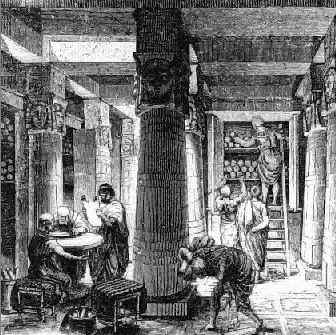|
|
|
|
The invention of inks paralleled the introduction of paper. The early Egyptians, Romans, Greeks and Hebrews, used papyrus and parchment papers. One of the oldest pieces of writing on papyrus known to us today, is the Egyptian "Prisse Papyrus" which dates back to 2000 B.C.
|
|
They made the papyrus into scrolls. A reader would undo the scroll with one hand, and roll it up again with the other, so only one part of it was shown at a time. Libraries looked rather different in those days!
|

|
 |
The Romans created a reed-pen perfect for parchment and ink, from the hollow tubular-stems of marsh grasses, especially from the jointed bamboo plant. They converted bamboo stems into a primitive form of fountain pen. They cut one end into the form of a pen nib or point. A writing fluid or ink filled the stem, squeezing the reed forced fluid to the nib. |
|
By 400 A.D. a stable form of ink developed, a composite of iron-salts, nutgalls and gum, the basic formula, which was to remain in use for centuries. Its color when first applied to paper was a bluish-black, rapidly turning into a darker black and then over the years fading to the familiar dull brown color commonly seen in old documents. Wood-fiber paper was invented in China in 105 A.D. but it only became known about (due to Chinese secrecy) in Japan around 700 A.D. and brought to Spain by the Arabs in 711 A.D. Paper was not widely used throughout Europe until paper mills were built in the late 14th century. |
|
 |
The writing instrument that dominated for the longest period in history (over one-thousand years) was the quill pen. Introduced around 700 A.D., the quill is a pen made from a bird feather. The strongest quills were those taken from living birds in the spring from the five outer left wing feathers. The left wing was favored because the feathers curved outward and away when used by a right-handed writer. Goose feathers were most common, swan feathers were of a premium grade being scarcer and more expensive. For making fine lines, crow feathers were the best, then came the feathers of the eagle, owl, hawk and turkey. |


